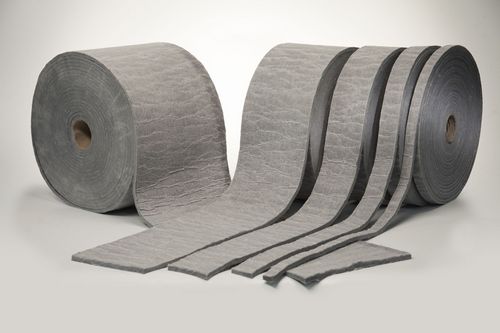What? When? Why?
Latest Happenings in Business World
12
Aug-2019
Make More Flexible Insulation Market by Doing Less
The flexible insulation market is relied upon to be driven because of the strict construction regulations in nations, for example, Canada, China, Germany, the U.K., France, the U.S., Italy, and Spain, among others.

Introduction:
Flexible insulation is a combination of different compounds that can stop the flow of heat and thermal energy. Flexible insulators can be classified into three types: fibrous, cellular, and granular insulation. It can be used for various industrial and non-industrial purposes, such as the production of panels, blankets, pipe coverings, etc. It also has some essential characteristics, such as the resistance to ultraviolet rays, the resistance to the growth of fungi and bacteria, the absorption of sound, the delay of the flame, etc.
Flexible insulation, a type of foam insulation, has an open cell structure that gives it flexibility and reduces weight. Spraying is the most widely used application technique for the insulation of flexible foam, which is commonly used in the construction industry. Acoustic and thermal insulation are key application areas that take advantage of the best properties offered by soft foam products. Flexible foam insulation is used in advanced infrastructure solutions in building construction due to its superior properties to isolate noise and heat.
Research methodology
The market for flexible foam insulation was analyzed by combining optimal secondary sources and internal methods, as well as a unique mix of primary ideas. A real-time market valuation is an integral part of our market sizing and forecasting methodology. Our industry experts and our panel of key participants helped us establish the best quality with realistic parametric estimates.
Growth:
Fiberglass, per material, is expected to represent the bulk of the global flexible insulation market in 2016, both in value and volume. This material sector will likely stimulate the flexible insulation market from 2016 to 2021, due to the growing demand for green buildings and programs to reduce greenhouse gases.
It is estimated that thermal insulators, by type, accounted for most of the flexible insulation market, both in value and volume, in 2016. This is due to the growing awareness of energy conservation.
Growth factors:
The transport sector, including the automotive, maritime, and aerospace industries, has become an important market segment in the global market in 2018. Car manufacturers are continually seeking to improve safety and security vehicles. Comfort, which is an essential factor in the demand for insulation in this sector.
Marketing strategies:
- Penetration in the market: complete information on the flexible insulation proposed by the leading players in the global flexible insulation market.
- Product development/innovation: detailed information on upcoming technologies, research, and development activities, and launch of new products in the flexible insulation market.
- Market development: Comprehensive information on lucrative emerging markets: the report analyzes flexible insulation markets in all regions
- Market diversification: complete information on new products, untapped geographical areas, recent developments, and investments in the global flexible insulation market.
- Competitive evaluation: in-depth assessment of market shares, strategies, products and manufacturing capabilities of key players in the flexible insulation market
Regional analysis:
The European region dominated the global flexible insulation market in 2015. More significant concern is expected to improve building efficiency, and insulation materials policies in Europe should boost the demand for flexible insulation. The high level of industrialization in Germany, coupled with the growing demand for residential and commercial space in France, is expected to increase demand for flexible insulation.
The European region is the largest market for flexible insulation, both in value and volume. It is expected that strict building energy codes, together with EU directives to improve building efficiency, will increase the demand for flexible insulation in the region. The strong demand for flexible insulation in the housing sector in countries such as Germany is another reason for the growth of the flexible insulation market.

WRITTEN BY: Karthik Thelakula
Karthik Thelakula is a Content Writer in Market Data Forecast, one of the world’s leading research and consulting for various business domains, individuals and corporate clients
CATEGORY
RECENT POST
CLIENTS








































.png)










.png)























































